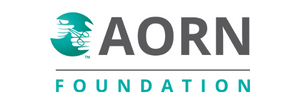AORN Center of Excellence in Surgical Safety: Prevention of RSI
Online Education
Register Now- Home
- Education
- Education for Facilities
- AORN Center of Excellence in Surgical Safety
- Center of Excellence in Surgical Safety-Retained Surgical Items (RSI)
Evidence-Based Education for Retained Surgical Items (RSI)
This evidence-based education raises awareness of factors that lead to RSIs, uses scenario-based immersive technology to improve skills, and helps teams mitigate risks and improve outcomes.
Your facility can earn public recognition and confirm your commitment to the highest levels of patient safety as an AORN Center of Excellence in Surgical Safety: Prevention of RSI after completing the program’s training.
- Download a complimentary gap analysis tool to assess current RSI prevention practices.
- Program Overview
- Resource Center
- View the facilities who have earned the designation as an AORN Center of Excellence in Surgical Safety: Prevention of RSI
Sponsored by Stryker through the AORN Foundation

The Impact of Retained Surgical Items
- Estimated cost of an RSI: $525,000
- RSIs occur in 1 per 10,000 surgical procedures
- Only 67% of RSIs are detected by x-rays
Need more information or assistance? Contact [email protected]
*Sources
Cost associated with RSI
Williams TL, Tung DK, Steelman VM, Chang PK, Szekendi MK. Retained surgical sponges: findings from incident reports and a cost-benefit analysis of radiofrequency technology. J Am Coll Surg. 2014;219(3):354-364.
Cohen AJ, Lui H, Zheng M, et al. Rates of serious surgical errors in California and plans to prevent recurrence. JAMA Netw Open. 2021;4(5):e217058.
Blanchfield BB, Acharya B, Mort E. The hidden costs of regulation: the administrative cost of reporting serious reportable events. Jt Comm J Qual Patient Saf. 2018;44(4):212-218.
X-Rays
Cima RR, Kollengode A, Garnatz J, Storsveen A, Weisbrod C, Deschamps C. Incidence and characteristics of potential and actual retained foreign object events in surgical patients. J Am Coll Surg. 2008;207(1):80-87
1 per 10,000 Procedures
Guideline for prevention of unintentionally retained surgical items. In: Guidelines for Perioperative Practice. Denver, CO: AORN, Inc; 2022:827-894.
This evidence-based program is made possible by Stryker through the AORN Foundation.



